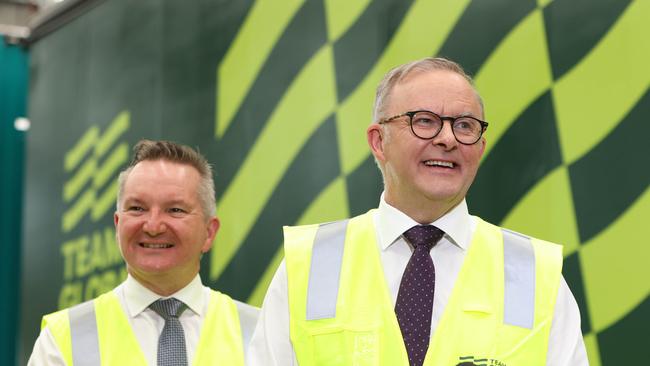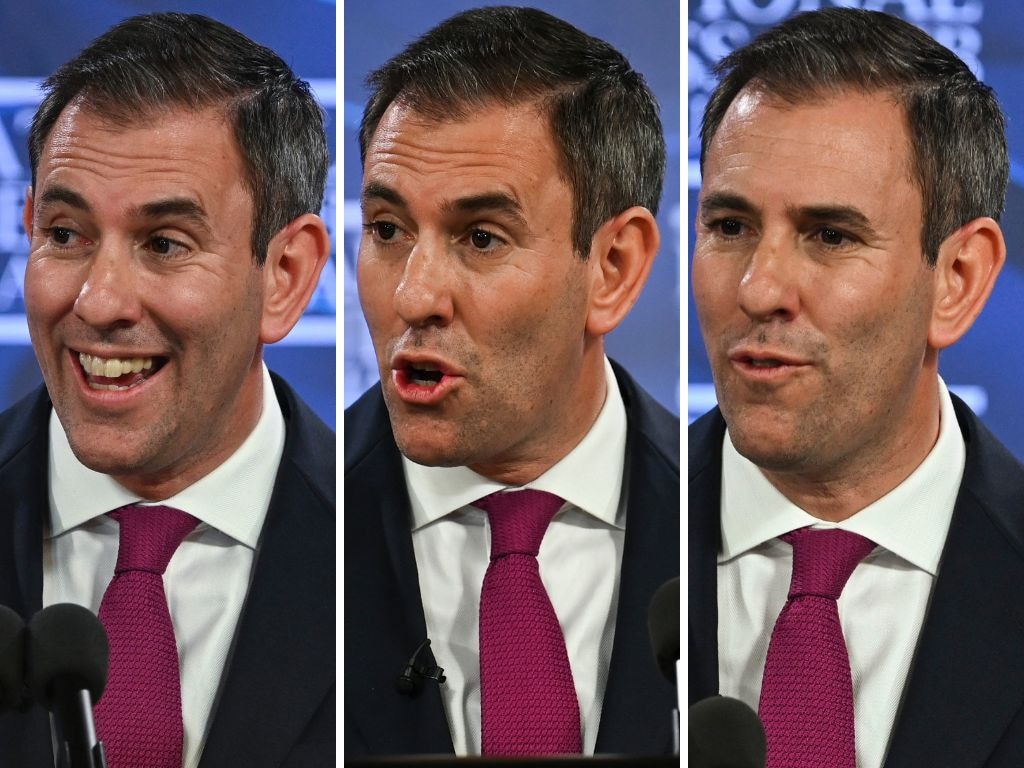Vision splendid evaporates in harsh light of practicality
There are many reasons to be fearful of the Albanese government’s plans for the future. Analysis points to its high-stakes industrial game.

Economic conditions are reviewed and the outlook is presented, domestically and globally. The spending and revenue plans for the coming financial year, as well as for the three years after that, are set out in considerable detail. Projections of the cash balances – be they surpluses or deficits – are given.
But the budget is more than an accounting/marketing exercise. It’s also about the type of country the incumbent government envisages for the future.
In many cases, this is fairly opaque. But in this year’s budget, handed down on Tuesday, the future vision of the government was set out in full glare.
Jim Chalmers even claimed “it’s a budget for the decades to come”. The Treasurer spoke about near-term pressures and long-term priorities. He waxed lyrical about “investing in the promise and potential of the more prosperous future we can make together”. He frequently mentioned Australia becoming a renewable energy superpower, even though what this means precisely is not clear.
In a similar vein, Anthony Albanese talked about a changing world in which the quest for net zero by 2050 was a dominant theme and where Australia would play a leading role. The Prime Minister spoke of Australia being a place where things were made, while attempting to sell the expensive Future Made in Australia program and the central role the government would play in this new nirvana.
Of course, many of us are scratching our heads about this newly announced program. On the face of it, it just looks like a repackaging of several initiatives that already have been legislated. They include the $15bn National Reconstruction Fund, which has been very slow to get going for want of any decent proposals.
Add in a few more expensive items – $8bn for green hydrogen and $7bn for refining and processing critical minerals – and the result is a package costing nearly $23bn, some of which will be on-budget and some off-budget.
Of course, there is retail politics in declaring that Australia will be a place where things are made – we know this from the successful use of this theme by Donald Trump although, in the case of the US, manufacturing has actually experienced a sharp renaissance.
So if voters are asked whether they like the idea of Australia making things, it will be grabbed enthusiastically. Whether the details are quite so appealing – uncertain green hydrogen projects in Gladstone, for instance – is not so certain.
Let’s be clear, this vision of Australia is radical. It hinges on a series of assumptions, most of which don’t stand up to scrutiny. It involves a much bigger role for government and government spending directed to “priority areas”. The potential risks involved are substantial. The sectors that have provided the basis of much of our economic prosperity – think coal, iron ore, liquefied natural gas and agriculture – are being shunned in favour of green-tinged activities.
It’s worth going through these assumptions because the analysis points to the high-stakes game the government is committing the country to.
The sectors that are being squeezed are unlikely to re-emerge, even though they are the ones that have underpinned our budget for most of this century.
On the point of the world overwhelmingly being committed to net zero by 2050 – or a decade or so later – there is in fact a great deal of variation. Most low-income and middle-income countries put the welfare of their citizens before achieving some ephemeral international agreement. And, let’s face it, many countries signed up to the Paris Agreement and subsequent versions only in the hope of receiving substantial transfers of aid money, which is part of the deal.
India, China and Russia, which in combination are massive emitters, are not really committed to net zero in the same way that, say, most European countries are. Even some of the most enthusiastic supporters of net zero are backing away, Britain being a clear example.
The assumption that the world will pay a premium for green products is also heroic; the budget laughably allocates $32m to encourage this outcome.
The Guarantee of Origin scheme, focused on renewable hydrogen, will be fast-tracked and the scheme will be expanded “to accredit the emissions content of green metals and low-carbon liquid fuels”. The view is that countries will pay more if they can be assured of the “high environment, social and governance standards in the critical minerals sector”. This is at the same time that ESG is on the wane in important US investment circles.
The third assumption is that Australia has some sort of comparative advantage in this changing world because we have significant reserves of several critical minerals as well as lots of sunshine and wind, a point that Climate Change and Energy Minister Chris Bowen likes to make. The trouble with this analysis is that it completely overlooks the many factors that are weighing against our attractiveness as a destination for investment.
Our energy costs are high and rising; our labour costs are high and our industrial relations arrangements are becoming more inflexible; we have a small local market; and our approval processes are convoluted, lengthy and costly. (Just this week the government agreed to ditch legislation to speed up the approval processes for natural gas developments to appease the Greens on another matter.)
If we compare the situation in the US, natural gas there is cheap and plentiful. There are workers who can be employed relatively cheaply and flexibly. There is a huge domestic market. The Inflation Reduction Act has spurred some particular investments but the main explanation of the surge in manufacturing activity relates to the overall attractiveness of the US for investors.
At this stage, the Albanese government may have more trouble hanging on to what manufacturing remains in the country. With the closure of the two Qenos plastic plants in the near future, we will lose an important national resource. But the cost of the feeder stock, mainly ethane, made these plants uncompetitive.
Food processing is also under pressure and we have had ominous warnings from Mars Inc and Mondelez International, which owns Cadbury. Without competitively priced gas and flexible workplace arrangements, we could easily see some of these local plants close down, too.
None of this seems to be putting the government off the pursuit of its vision even though the practical risks are immense. We can’t even be sure that green hydrogen can be generated at scale and at a competitive price and then transported. Lots of countries are trying and it’s not clear that we have many of the key success factors. (By the way, production subsidies are one of the most distorting forms of assistance.) As for green steel, it’s really just a dream at this stage.
We can be sure, however, that manufacturing solar panels in this country is a dead-cert loser but close to $1bn has been allocated to the establishment of a plant in the Hunter Valley, Solar Sunshot. Of the five largest solar panel factories in the world, four are in China and the fifth is in Canada, and it is struggling to remain viable.
The bottom line is that there are many reasons to be fearful of this government’s plans for the future. They are based on numerous untested assumptions and a lack of appreciation of the immense practical difficulties involved. It’s one thing to make an announcement; it’s another thing altogether actually to achieve the outcome.
As Winston Churchill once said, “However beautiful the strategy, you should occasionally look at the results.”






Every federal budget does several things, including providing an intense marketing opportunity for the government of the day.